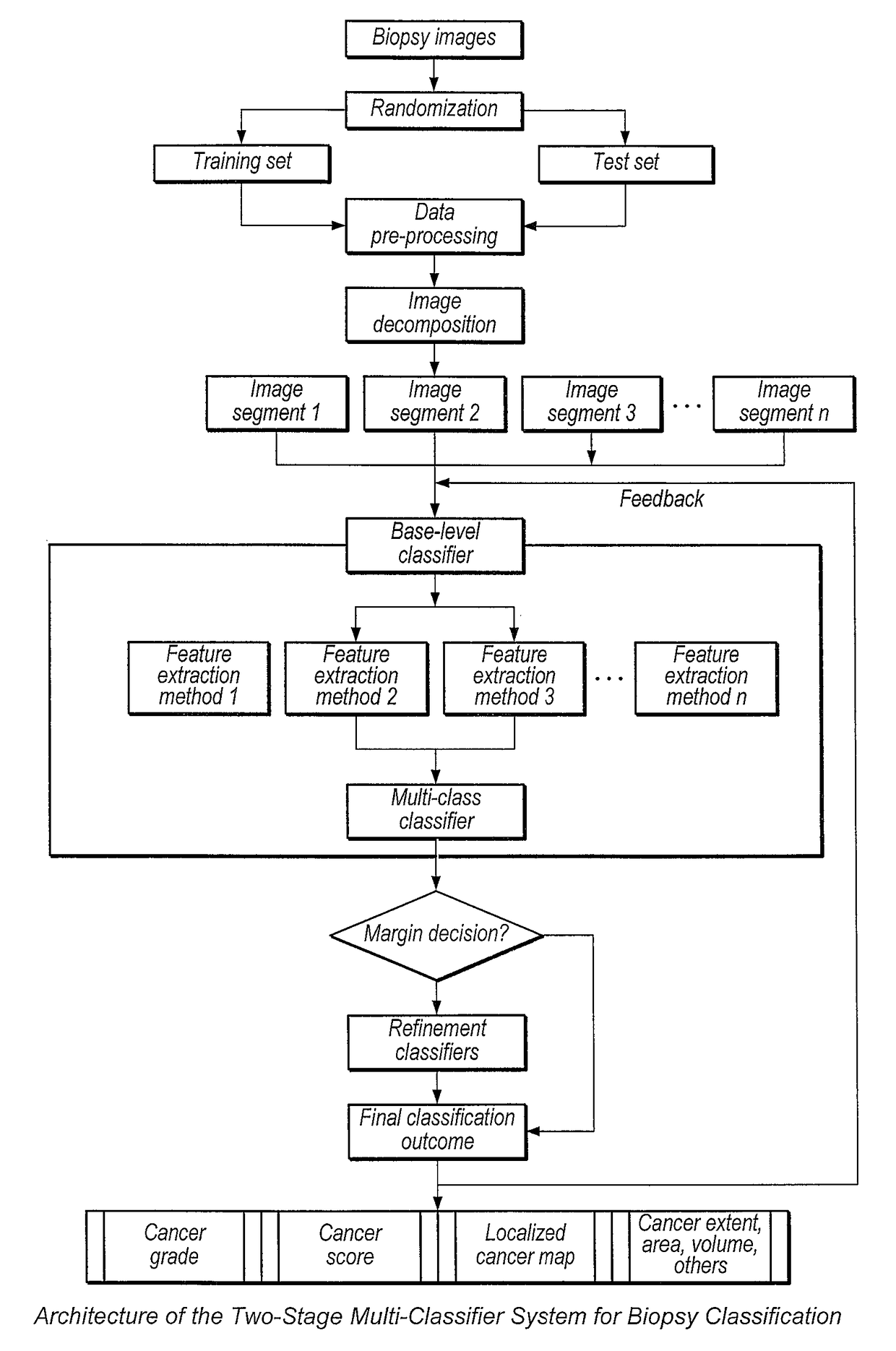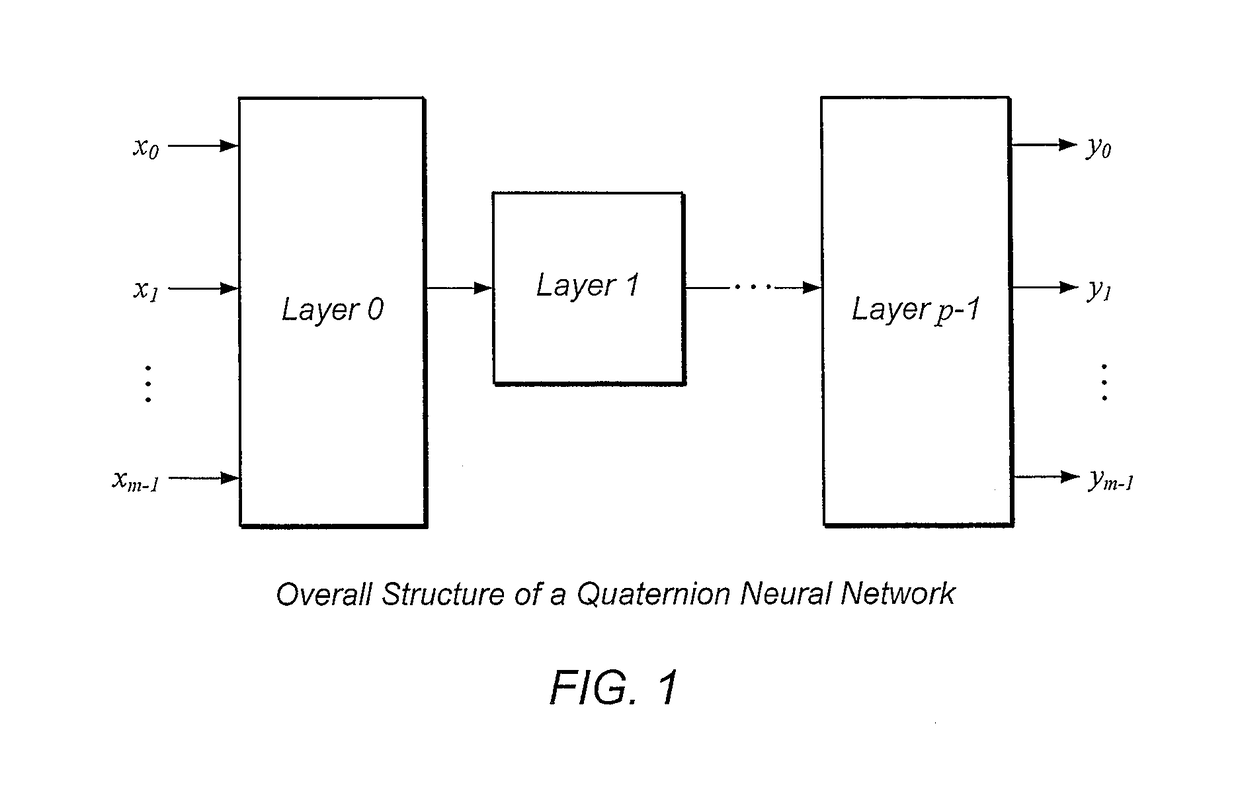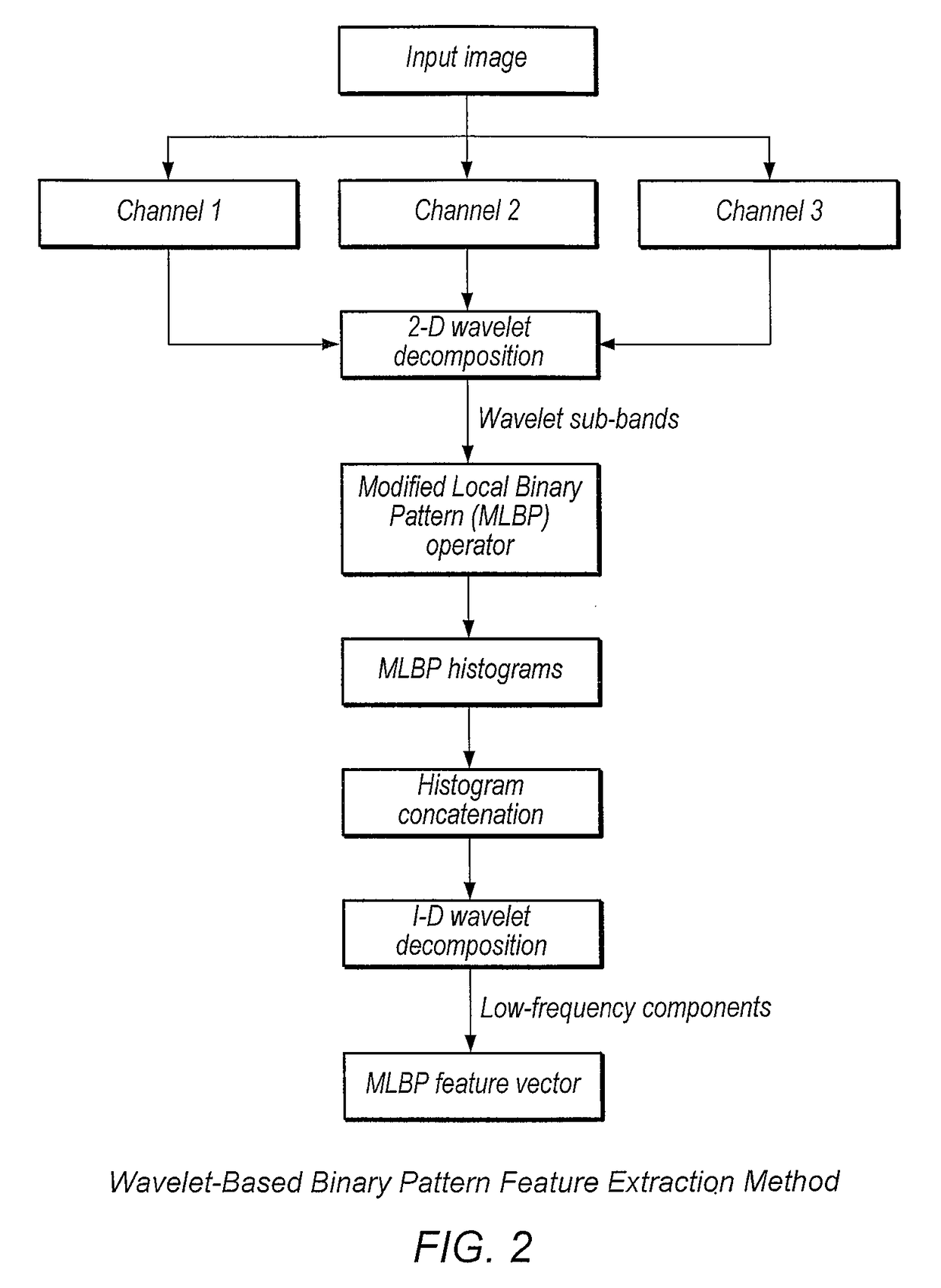Systems and methods for quantitative analysis of histopathology images using multiclassifier ensemble schemes
a multi-classifier and ensemble scheme technology, applied in the field of cancer detection and classification, can solve the problems of variability in interpretation and application of grading criteria, inability to reproduce judgments, and difficulty in quantitative analysis and classification
- Summary
- Abstract
- Description
- Claims
- Application Information
AI Technical Summary
Benefits of technology
Problems solved by technology
Method used
Image
Examples
example 1
Gleason Grading
[0123]In this example a prostate cancer Gleason grading system was used to estimate the prostate cancer grade. Described herein is the framework for the development of a prostate cancer grading system. For purposes of the illustration of this embodiment of the present invention an example of a system for the grading of prostatic carcinoma from digitized histopathology slides is explained in detail. However, it must be understood that the present invention is also applicable to biopsies of other body organs including but not constrained to the skin, liver, breast, brain, kidney, pancreas, lungs, colon, rectum, bladder, cervix, and uterus. The input data may be small images of pre-selected regions of interest or whole-slides. When processing whole-slides, a grid of size s×s is placed over the image, and the classification process described below is performed once per resulting block. The general architecture of the system is illustrated in FIG. 5.
[0124]The description o...
example 2
[0175]In this example a multi-classifier system was used to grade prostate cancer. Described herein is a system for grading and scoring of prostate cancer based on the Gleason grading system, which is presented as an exemplary application of the multi-classifier system for biopsy classification. The system is composed of a pre-processing unit and six base-level sub-systems. Each base-level sub-system is comprised of a feature extraction unit, a classification method, and, as necessary, a function to obtain posterior probabilities from the classification output. In addition, the multi-classifier system has a fusion unit and several binary classifiers for refinement tasks. The decision of the classifier ensemble is produced by using a dynamic weighted voting technique, which will be explained later in this section. The purpose of the binary refinement classifiers is to improve overall system accuracy.
[0176]The description of processes carried out in the system will be s...
example 3
[0223]In this example a Multi-classifier system was used to detect skin cancer. In order to demonstrate the general applicability of the disclosed system, the multi-classifier system of the previous example is also applied to the problem of skin cancer classification. The output of the system provides information about the nature of the lesion by classifying input data into major types of skin cancers: melanoma (MM), basal cell carcinoma (BCC), and cutaneous squamous cell carcinoma (SCC). Experiments were carried out on a database of 60 color images of Hematoxylin and Eosin (H&E)-stained skin tissue samples. The dataset contains 30 images of melanoma, 20 images of BCC, and 10 of SCC. Leave-one-out cross-validation was used to estimate the performance of the system. The average CCR, sensitivity, specificity, PPV, and NPV are summarized in Table 3.
[0224]
TABLE 3Performance indicators of the proposed system in skin cancer classification averaged over 10 simulat...
PUM
 Login to View More
Login to View More Abstract
Description
Claims
Application Information
 Login to View More
Login to View More - R&D
- Intellectual Property
- Life Sciences
- Materials
- Tech Scout
- Unparalleled Data Quality
- Higher Quality Content
- 60% Fewer Hallucinations
Browse by: Latest US Patents, China's latest patents, Technical Efficacy Thesaurus, Application Domain, Technology Topic, Popular Technical Reports.
© 2025 PatSnap. All rights reserved.Legal|Privacy policy|Modern Slavery Act Transparency Statement|Sitemap|About US| Contact US: help@patsnap.com



